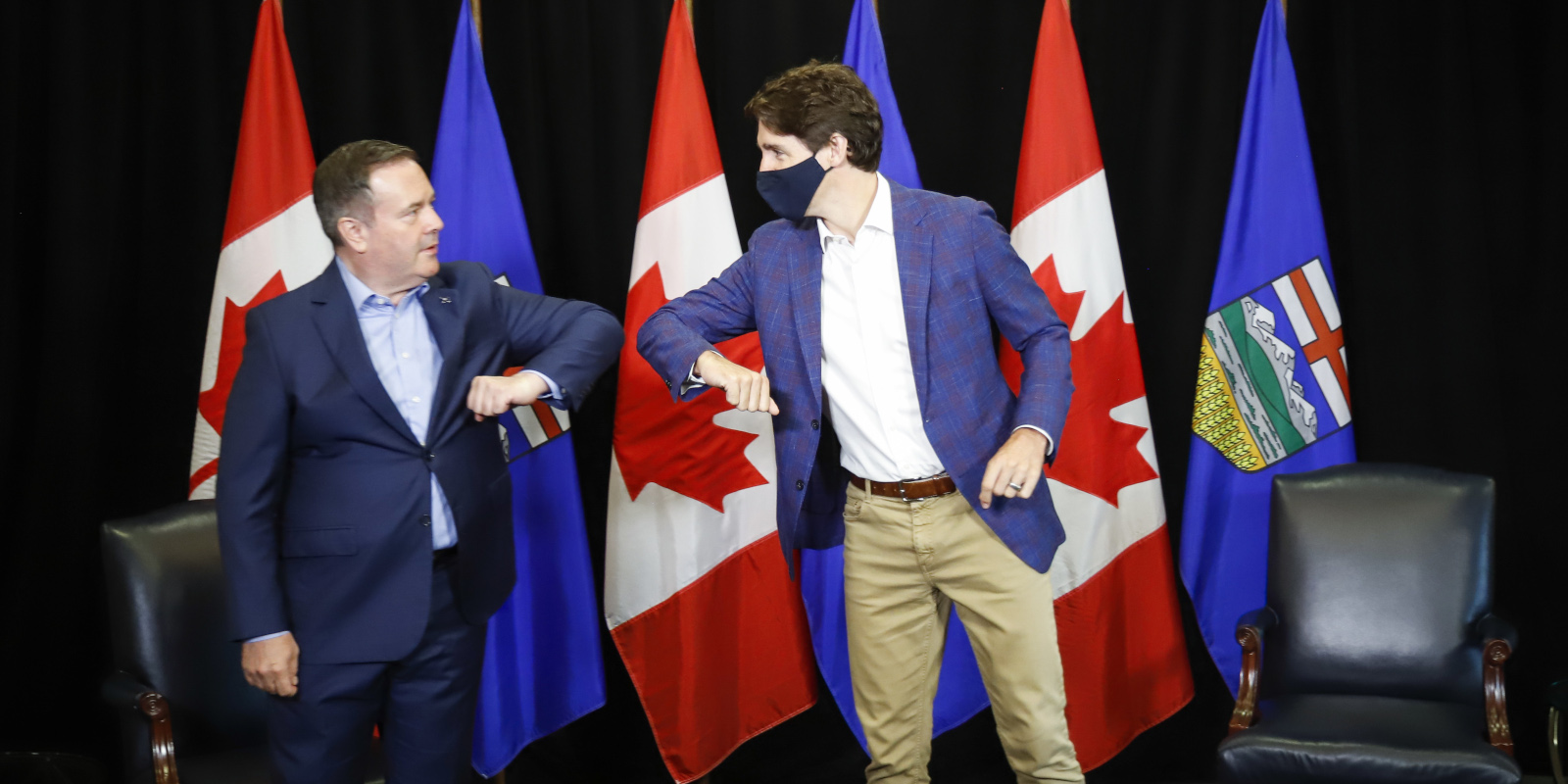“Today our country is facing a national unity crisis,” said Conservative Party of Canada leader Erin O’Toole during an early July speech in Alberta. “It’s time for the unfairness to end. Since 1967, Albertans have contributed more than $600 billion to the rest of Canada … [and] even as your economy suffered with massive reductions in resource revenues, you as Albertans continued to pay more than your fair share.”
Provincial leaders in Alberta couldn’t agree more. “Alberta has been the engine of Canada’s prosperity in recent decades,” said Alberta’s Premier Jason Kenney in a July 15 press conference. “We have contributed through our federal taxes over $600 billion to the rest of Canada… but what we find very frustrating is a system that finds us contributing on average $20 billion a year net through our federal taxes to other provinces even while we have been living through a prolonged recession.”
As Canada moves towards a likely federal election soon, and Alberta towards an October referendum on equalization, we’re going to hear these figures frequently. But what do they mean? Where do they come from? And are they a sign of unfairness? These are important questions beyond just Alberta and worth exploring in depth.
Using a new interactive data tool from Finances of the Nation, I’ll try to explain.
Alberta’s $600 Billion Contribution?
First, just to be clear: the more than $600 billion net contribution since the 1960s cited by both Kenney and O’Toole is true. But the full context is often missing from political speeches.
Luckily, it is fairly simple.
The federal government raises revenue from several sources — taxes on incomes, wages, profits, consumption, imports, and so on. The same tax rates and schedules apply to all of us, but since some Canadians have different incomes, different consumption habits, and so on, we each pay different amounts. And since high-income people disproportionately live in some provinces over others, more is raised from those provinces than others.
At the same time, federal spending affects each of us differently. Older Canadians receive more transfers than younger (through CPP, OAS, and GIS) and parents more than singles. It might also depend on where you live. Halifax residents, for example, benefit significantly from high military spending. Some spending is spread perfectly evenly (such as health and social transfers), and therefore is not redistributive, but these programs are the exception.
Combined, it’s differences in federal revenue and spending across provinces that redistribute funds. If the federal government raises more per person from some province than elsewhere, that’s an outflow; if it spends more per person then elsewhere, that’s an inflow; and so on.
These flows can be very large.
Consider Alberta. The federal government raises more revenues from taxpayers residing there than elsewhere and also spends less. I plot this below. The gap for 2019 is nearly $20 billion — just as was cited by Premier Kenney
Between 1961 and 2019, this data suggests Alberta’s “net contribution” was $622 billion — roughly five percent of its economic activity over the period, equivalent to $3,344 annually per person in today’s dollars. Meanwhile, the net contribution by Ontario averaged about 4 percent of its economy ($992 billion or $1,671 per person) and the net inflow to Prince Edward Island averaged nearly 30 percent (!) of its economy.
(Un)Fairness in the Federation?
Whether this is fair or not depends on the cause. This is where the new tool really helps.
Let’s start with Ontario.
Since a large share of federal activities are in Ottawa, Ontario residents and businesses tend to receive more in federal spending than elsewhere. That’s a negative contribution. Not all spending is high in Ontario, though. Its strong economy means that it doesn’t typically qualify for equalization payments and when it does, such as for the decade following the financial crisis, payments are relatively small. That’s a positive contribution.
On the revenue side, many high-earners live in Ontario, as do many profitable corporations. Federal taxes paid are therefore higher than average. On balance, Ontario is a net “contributor” to federal finances of roughly $18 billion in 2019.
Alberta is a more interesting case. Since 2007, over $328 billion was implicitly redistributed out of the province, that is, over half the total transfer since 1961 took place in just the past dozen years and most of this — fully 55 percent — is due to taxes on income, profits and consumption. And 18 percent of the net contribution is due to fewer payments to elderly individuals through CPP, OAS, and GIS. This is not because benefit amounts differ but because Alberta is a young province compared to others.
What about equalization? Redistribution through that program is about as significant as the federal GST.
And Alberta’s recession? Alberta’s economy contracted more than 20 percent from 2014 to 2016 and its net contributions fell by nearly 40 percent. Net contributions through taxes on income, profits, and consumption fell by more than half. But importantly, despite its recession average income among Albertans remains higher than any other province — and therefore net contributions continue.
So… is this fair? That’s not for me to say. But the same 5 percent GST applies in Alberta as elsewhere, as does the same 15 percent corporate income tax rate and the same income tax schedule for individuals. Identical treatment still results in redistribution because more high income individuals just happen to live in Alberta, and therefore pay more dollars than average. It’s not “Alberta” but high-income Albertans that account for this.
Of course, some prefer lower and flatter federal taxes while others prefer the reverse. Some prefer federal spending be allocated evenly across the country, others prefer it be allocated efficiently and at the least cost. Either way, one thing is clear, if one is concerned with federal redistribution then a focus on equalization is only a small part of the story. And, importantly, provincial governments do not themselves transfer anything to the federal government or to other provinces.
A Staple of Canadian Politics
Concerns around federal redistribution are neither new nor unique to Alberta conservatives.
Ontario’s Liberal Premier Dalton McGuinty would regularly bang a similar drum — citing a $23 billion per year contribution to Canada, and saying it “compromises our ability to invest in Ontario’s future prosperity” and demanded “Ontario be treated fairly.”
Grievances like these even pre-date Canada and are an interesting factor behind its very formation. George Brown, an influential politician behind Confederation, declared to fellow legislators in 1865: “We in Upper Canada have complained that though we paid into the public treasury more than three-fourths of the whole revenue, we had less control over the system of taxation and the expenditure of the public moneys than the people of Lower Canada. Well, sir, the scheme in your hand [Confederation] remedies that.”
One of his primary grievances was Canada West (i.e. Ontario) being a “net contributor,” and separation from Canada East (Québec) and forming a federation was the solution.
So concerns around redistribution and fairness are here to stay, making it important to be informed. Cutting through the sometimes oversimplified language of politics is never easy. Hopefully this explanation and new data helps make some sense of it.
Recommended for You

Send The Hub your health-care horror stories!

Quebec’s health reforms are controversial—and exactly the shake-up Canadian health-care needs

Danielle Smith (finally) delivers health-care reform

The biggest energy story in Canada nobody’s talking about





Comments (0)